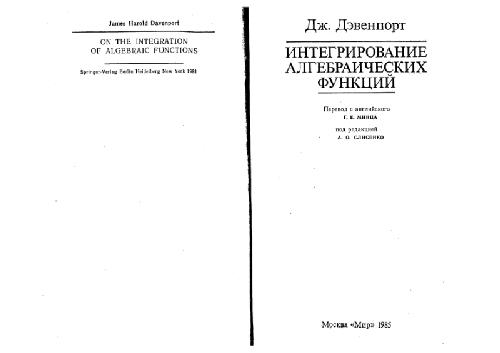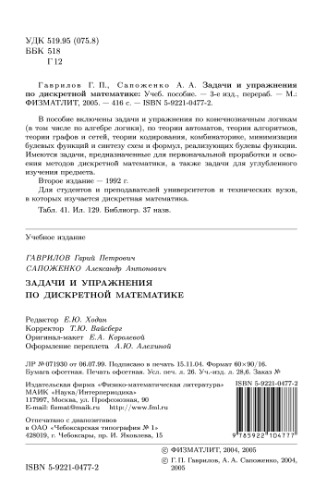Hulin Wu, Jin-Ting Zhang9780471483502, 0471483508
Table of contents :
Nonparametric Regression Methods for Longitudinal Data Analysis……Page 2
Contents……Page 14
Preface……Page 10
Acronyms……Page 24
1.1 Motivating Longitudinal Data Examples……Page 26
1.1.1 Progesterone Data……Page 27
1.1.2 ACTG 388 Data……Page 29
1.1.3 MACS Data……Page 31
1.2.1 Parametric Mixed-Effects Models……Page 32
1.2.2 Nonparametric Regression and Smoothing……Page 33
1.2.3 Nonparametric Mixed-Effects Models……Page 35
1.3.1 Building Blocks of the NPME Models……Page 36
1.3.2 Fundamental Development of the NPME Models……Page 37
1.3.3 Further Extensions of the NPME Models……Page 38
1.6 Bibliographical Notes……Page 39
2.2.1 Model Specification……Page 42
2.2.2 Estimation of Fixed and Random-Effects……Page 44
2.2.3 Bayesian Interpretation……Page 45
2.2.4 Estimation of Variance Components……Page 47
2.2.5 The EM-Algorithms……Page 48
2.3.2 Two-Stage Method……Page 51
2.3.3 First-Order Linearization Method……Page 54
2.3.4 Conditional First-Order Linearization Method……Page 56
2.4.1 Generalized Linear Mixed-Effects Model……Page 57
2.4.2 Examples of GLME Model……Page 60
2.5 Summary and Bibliographical Notes……Page 62
2.6 Appendix: Proofs……Page 63
3.1 Introduction……Page 66
3.2.1 General Degree LPK Smoother……Page 68
3.2.2 Local Constant and Linear Smoothers……Page 70
3.2.3 Kernel Function……Page 71
3.2.4 Bandwidth Selection……Page 72
3.2.5 An Illustrative Example……Page 74
3.3 Regression Splines……Page 75
3.3.1 Truncated Power Basis……Page 76
3.3.2 Regression Spline Smoother……Page 77
3.3.3 Selection of Number and Location of Knots……Page 78
3.4 Smoothing Splines……Page 79
3.4.1 Cubic Smoothing Splines……Page 80
3.4.2 General Degree Smoothing Splines……Page 81
3.4.3 Connection between a Smoothing Spline and a LME Model……Page 82
3.4.4 Connection between a Smoothing Spline and a State-Space Model……Page 83
3.4.5 Choice of Smoothing Parameters……Page 84
3.5.1 Penalized Spline Smoother……Page 85
3.5.4 Extension……Page 87
3.7 Methods for Smoothing Parameter Selection……Page 88
3.7.1 Goodness of Fit……Page 89
3.7.3 Cross-Validation……Page 90
3.7.4 Generalized Cross-Validation……Page 91
3.7.6 Akaike Information Criterion……Page 92
3.8 Summary and Bibliographical Notes……Page 93
4.1 Introduction……Page 96
4.2 Nonparametric Population Mean Model……Page 97
4.2.1 Naive Local Polynomial Kernel Method……Page 98
4.2.2 Local Polynomial Kernel GEE Method……Page 100
4.2.3 Fan-Zhang ‘s Two-step Method……Page 102
4.3 Nonparametric Mixed-Effects Model……Page 103
4.4.1 Local Polynomial Approximation……Page 104
4.4.2 Local Likelihood Approach……Page 105
4.4.3 Local Marginal Likelihood Estimation……Page 106
4.4.4 Local Joint Likelihood Estimation……Page 107
4.4.5 Component Estimation……Page 109
4.4.6 A Special Case: Local Constant Mixed-Effects Model……Page 110
4.5.1 Leave-One-Subject-Out Cross-Validation……Page 112
4.5.3 Bandwidth Selection Strategies……Page 113
4.6 LPME Backfitting Algorithm……Page 115
4.7 Asymptotical Properties of the LPME Estimators……Page 117
4.8 Finite Sample Properties of the LPME Estimators……Page 121
4.8.1 Comparison of the LPME Estimators in Section 4.5.3……Page 123
4.8.2 Comparison of Different Smoothing Methods……Page 124
4.8.3 Comparisons of BCHB-Based versus Backfitting-Based LPME Estimators……Page 126
4.9 Application to the Progesterone Data……Page 128
4.10 Summary and Bibliographical Notes……Page 131
4.11.1 Conditions……Page 132
4.11.2 Proofs……Page 133
5.2 Naive Regression Splines……Page 142
5.2.1 The NRS Smoother……Page 143
5.2.2 Variability Band Construction……Page 144
5.2.3 Choice of the Bases……Page 145
5.2.5 Selection of the Number of Basis Functions……Page 146
5.2.6 Example and Model Checking……Page 148
5.2.7 Comparing GCV against SCV……Page 150
5.3.1 The GRS Smoother……Page 152
5.3.2 Variability Band Construction……Page 153
5.3.4 Estimating the Covariance Structure……Page 154
5.4 Mixed-Effects Regression Splines……Page 155
5.4.1 Fits and Smoother Matrices……Page 156
5.4.2 Variability Band Construction……Page 158
5.4.3 No-Effect Test……Page 159
5.4.5 Choice of the Number of Basis Functions……Page 160
5.4.6 Example and Model Checking……Page 164
5.5.1 Comparison via the ACTG 388 Data……Page 167
5.5.2 Comparison via Simulations……Page 168
5.6 Summary and Bibliographical Notes……Page 170
5.7 Appendix: Proofs……Page 171
6.2 Naive Smoothing Splines……Page 174
6.2.2 Cubic NSS Estimator……Page 175
6.2.3 Cubic NSS Estimator for Panel Data……Page 177
6.2.5 Choice of the Smoothing Parameter……Page 178
6.2.6 NSS Fit as BLUP of a LME Model……Page 180
6.2.7 Model Checking……Page 181
6.3.1 Constructing a Cubic GSS Estimator……Page 182
6.3.3 Choice of the Smoothing Parameter……Page 183
6.4.1 Subject-Specific Curve Fitting……Page 184
6.4.2 The ESS Estimators……Page 185
6.4.3 ESS Fits as BLUPs of a LME Model……Page 186
6.5 Mixed-Effects Smoothing Splines……Page 189
6.5.1 The Cubic MESS Estimators……Page 190
6.5.2 Bayesian Interpretation……Page 192
6.5.3 Variance Components Estimation……Page 193
6.5.4 Fits and Smoother Matrices……Page 195
6.5.5 Variability Band Construction……Page 196
6.5.6 Choice of the Smoothing Parameters……Page 197
6.5.7 Application to the Conceptive Progesterone Data……Page 199
6.6.1 General Degree NSS……Page 202
6.6.3 General Degree ESS……Page 203
6.6.4 General Degree MESS……Page 206
6.7 Summary and Bibliographical Notes……Page 207
6.8 Appendix: Proofs……Page 208
7.2 Naive P-Splines……Page 214
7.2.1 The NPS Smoother……Page 215
7.2.2 NPS Fits and Smoother Matrix……Page 217
7.2.4 Degrees of Freedom……Page 218
7.2.5 Smoothing Parameter Selection……Page 219
7.2.6 Choice of the Number of Knots……Page 220
7.2.7 NPS Fit as BLUP of a LME Model……Page 227
7.3.2 Degrees of Freedom……Page 228
7.3.6 GPS Fit as BLUP of a LME Model……Page 229
7.4.1 Subject-Specific Curve Fitting……Page 230
7.4.3 EPS Fits as BLUPs of a LME Model……Page 232
7.5 Mixed-Effects P-Splines……Page 234
7.5.1 The MEPS Smoothers……Page 235
7.5.2 Bayesian Interpretation……Page 237
7.5.3 Variance Components Estimation……Page 239
7.5.5 Variability Band Construction……Page 241
7.5.6 Choice of the Smoothing Parameters……Page 242
7.5.7 Choosing the Numbers of Knots……Page 246
7.6 Summary and Bibliographical Notes……Page 251
7.7 Appendix: Proofs……Page 252
8.1 Introduction……Page 254
8.2.1 Model Specification……Page 255
8.2.2 Local Polynomial Method……Page 256
8.2.4 Penalized Spline Method……Page 259
8.2.5 Smoothing Spline Method……Page 262
8.2.6 Methods Involving No Smoothing……Page 264
8.2.7 MACS Data……Page 266
8.3.1 Model Specification……Page 269
8.3.2 Local Polynomial Method……Page 272
8.3.3 Regression Spline Method……Page 275
8.3.4 Penalized Spline Method……Page 276
8.3.5 Smoothing Spline Method……Page 278
8.3.6 ACTG 388 Data Revisited……Page 282
8.3.7 MACS Data Revisted……Page 284
8.4.1 ModeI Specification……Page 289
8.4.2 Wu and Zhang’s Approach……Page 290
8.4.3 Ke and Wang’s Approach……Page 292
8.4.4 Generalizations of Ke and Wang ‘s Approach……Page 295
8.5 Summary and Bibliographical Notes……Page 296
9.1 Introduction……Page 300
9.2 Time-Varying Coefficient NPM Model……Page 301
9.2.1 Local Polynomial KerneI Method……Page 302
9.2.2 Regression Spline Method……Page 304
9.2.3 Penalized Spline Method……Page 306
9.2.4 Smoothing Spline Method……Page 307
9.2.5 Smoothing Parameter Selection……Page 311
9.2.6 Backfitting Algorithm……Page 312
9.2.7 Two-Step Method……Page 313
9.2.8 TVC-NPM Models with Time-Independent Covariates……Page 314
9.2.9 MACS Data……Page 315
9.2.10 Progesterone Data……Page 317
9.3 Time-Varying Coefficient SPM Model……Page 318
9.4 Time-Varying Coefficient NPME Model……Page 320
9.4.1 Local Polynomial Method……Page 321
9.4.2 Regression Spline Method……Page 323
9.4.3 Penalized Spline Method……Page 325
9.4.4 Smoothing Spline Method……Page 328
9.4.5 Backfitting Algorithms……Page 330
9.4.6 MACS Data Revisted……Page 332
9.4.7 Progesterone Data Revisted……Page 334
9.5.1 Backfitting Algorithm……Page 337
9.6 Summary and Bibliographical Notes……Page 338
10.1 Introduction……Page 340
10.2 Generalized NPM Model……Page 341
10.3 Generalized SPM Model……Page 343
10.4 Generalized NPME Model……Page 346
10.4.1 Penalized Local Polynomial Estimation……Page 347
10.4.2 Bandwidth Selection……Page 350
10.4.3 Implementation……Page 352
10.4.4 Asymptotic Theory……Page 353
10.4.5 Application to an AIDS Clinical Study……Page 356
10.5 Generalized TVC-NPME Model……Page 359
10.6 Generalized SAME Model……Page 361
10.7 Summary and Bibliographical Notes……Page 366
10.8 Appendix: Proofs……Page 367
References……Page 372
Index……Page 387







Reviews
There are no reviews yet.